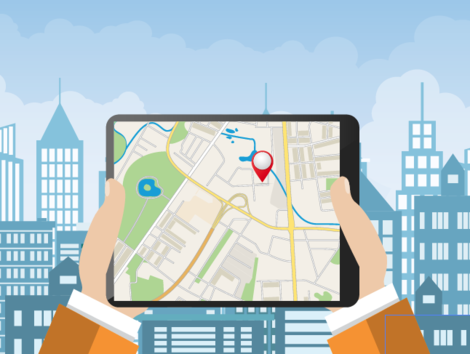When automatic teller machines went mainstream in the 1960s, scaremongers predicted the end of bank branches and the role of the friendly neighbourhood teller.
50 years later, we’re at the same crossroads.
The top five UK banks have closed an estimated 1,700 bank branches in the past five years, but customer demand for face-to-face services remains high. According to research by think tank the Social Market Foundation, nearly two-thirds of consumers prefer to talk to someone in person when making a big financial decision, with half of mortgages customers wanting to visit a branch.
While many of the high street banks have closed down branches to cut costs, most have ramped up their digital services extensively. A British Bankers’ Association study revealed that UK customers log into banking apps over 11 million times a day, transferring £2.9 billion through online banking every week. While figures on the daily footfall at local bank branches across the nation are not available to compare, it is more than likely that these numbers are mushroomed by digital consumers.
Bhupender Singh, CEO of business process outsourcer, Intelenet Global Services disagrees.
Singh believes that banks may miss out on the opportunity to court customers that clearly still need human interaction. According to him, banks must consider ways to maximise their adviser networks, utilising next-generation technologies to transform the nature of the branch
While all of the major high street and challenger banks in the UK have their own proprietary apps for mobile banking, none of these platforms have ventured beyond simple banking tasks like checking account balances and transferring funds.
Roaming advisers?
First, there was Uber. Then there was UberPITCH and UberEATS. At the core of these off-shoots is a location-based matchmaking platform that links supply to demand for a fee. In the enterprise world, an Uber-like scheduling tool, is currently being used to manage roaming teams of nurses in the US. It is in its early stages for potential application in the banking sector.
Radius essentially functions like Uber in enabling companies to allocate and dispatch mobile teams (the supply-side) to nearby appointments (the demand-side).
According to Singh, Radius could modernise the branch banking business model to bring advisers to customers. A simple mobile app may have the potential to empower banks to connect roaming advisers to nearby customers when and where they are needed, sidestepping the costly outlay of a high street branch, while retaining in-person service, he explains.
“In general, the past years have seen the explosion of online banking services, many of which are completed without any human interaction. Unfortunately, some customer segments are being left behind by this shift, and the majority of consumers, ranging across demographics, still crave a face-to-face service when making major financial decisions,” Singh says.
“Some challenger banks are bucking the trend, finding success by combining technology which improves the speed of their service, with efforts to build a high-street branch network.”
The business process outsourcer has worked with a top six mortgage provider using this platform. The Uber-like app cut down mortgage approval time from 11 days to 48 hours, resulting in large back-office savings which can be redirected to the front-end in terms of customer service.
“Yet there are bigger changes that can and should be made when it comes to the traditional model of branch banking – and we believe that technological innovations such as Radius have a lot of potential answers.”
The Payment Services Directive (PSD2): a game-changer
PSD2 requires Europe’s banks to offer third-party providers greater access to customer data and payment infrastructure, and gives banks until 2018 to lower the barriers for entry to third-party providers and industrious fintech companies.
By sharing application programming interfaces (API), banking could be as integrated as transport, entertainment and food industries, offering consumers completely streamlined and competitive financial services.
The future of banking could be completely customer-led, in a laissez-faire system where customers can switch between finance providers as and when they please. From there, a Siri for banking may as well recommend the best interest rates or currency exchange for the customer based on numbers alone.
An overlap of artificial intelligence, a level playing field, transparent rates and the immediacy of the internet could see an uncanny rise in the robot adviser.
Yann Ranchere, partner at international investment and advisory firm Anthemis believes that a longer view of the sector requires a a deeper look into the two complementary trends of artificial intelligence and omnipresent data.
“Financial services’ core functions are based on managing scarcity and information asymmetry. With the amount of data increasing at high speed, notably through widespread, cheaper and more detailed sensors and the capability to process it progressing in parallel through the use of machine intelligence, the core market of financial services will be affected,” he explains.
“The autonomous car is the perfect metaphor for it: what is the insurance market of a sensor full, crash avoiding vehicle? But similarly, what new markets will this create for financial services?”
Ultimately, it may not be inconceivable in the future to hear the dulcet voice of a robotic adviser say, “I see you’ve booked a holiday to Kota Kinabalu in October. Would you like to buy Malaysian Ringgit?”
In this brave new world, you’ll have an Uber waiting at the airport to shuttle you to your Airbnb room straight after.
Further reading: ‘Free-for-all feeding frenzy’ PSD2 may be the best thing for Europe’s banks







